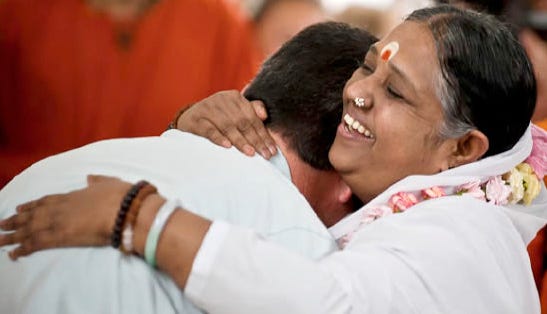
I used to pride myself on being a truth-teller, but my approach to it changed after attending a new-agey leadership program a decade ago.
The leadership program involved four week-long sessions in Sonoma focused on woo topics like, "how to manage energy in a space." Women outnumbered men, the moderators wore tie-dye, and people would periodically cry, which always triggered me because of the lopsided attention it would get relative to other emotions like, say, my barely concealed anger. Despite my initial skepticism, the program changed my life.
At one point, they diagnosed our leadership "types" based on when our energy was the most compelling. My type was "Danger" which means that people found me most compelling as a truth-teller. My Danger energy was crackly, like the calm before a storm. The moderators pushed me to lean into that energy and experiment with it. This felt scary and exhilarating, like they had given me permission to go full-on Thor, speaking daring truths in the style of the Norse god of thunder and lightening.
But as I experimented with going full Danger, I quickly learned that the line between telling the truth in a compelling way and just being an asshole is frighteningly thin. When I checked my motives and spoke truths from the heart, the impact of truth-telling was compelling. It was like opening the windows in a stuffy house and feeling the fresh air. It served people. But when I did not check my motives, or spoke truths from a place of moodiness or not enough sleep or too much caffeine, it was off-putting. I was a jerk.
We labeled this telling the beautiful truth versus telling the brutal truth. The beautiful truth draws people in; the brutal truth pushes people away. The beautiful truth serves people by creating space and openness, even if the truths are hard; the brutal truth casts a darker energy and feels bad, even if the truths are spot-on. The beautiful truth exercises restraint and knows when to shut up; the brutal truth runs its mouth like a sassy kid to the substitute teacher.
As the leadership program concluded, I began to realize that truth-telling doesn’t always have to look like Thor striking down with his hammer, though sometimes that approach is needed and can be compelling. Indeed, there are times when telling the beautiful truth can look brutal. What makes it beautiful is when the intent and impact are aligned around a greater good. I think of someone like Churchill as a model of a hard truth-telling in a way that was compelling.
But telling the beautiful truth can also look like Mata Amritanandamayi, the Hugging Saint of Kerala. It can be like giving people a hug or connecting with their spirit. In other words, the range of styles for telling the beautiful truth is wide. It can be appear hard or soft. The distinction is based on context, intent, and impact. An easy heuristic is asking, Was it constructive?
In the decade since, I have tried to live by the rule to tell the beautiful truth and not the brutal truth. Initially, this was easier said than done. The combination of twitter, politics, alcohol, and personal character defects often pushed me into the lane of brutal truths rather than beautiful truths. I failed and made mistakes many times. Then there were moments when I wasn't sure how to tell the beautiful truth. If someone asked me if they look fat, and they did, how could I tell the beautiful truth? What does that mean in that situation?
But over time, I kept chipping away at it. I have learned that I don't always have to speak if it doesn't serve people. Diplomacy is good! I’ve also taken a time-out from drinking, which has helped take hangovers out of the equation. And I’m better at checking my motives, too. If my truth-telling feels tainted by my ego or mood, I try not to indulge it.
With the support of my writing program, Write of Passage, I've been experimenting with telling truths about myself that feel scary and vulnerable but that might have a positive impact or create healing. For example, I tried this when I wrote a letter to myself in 2015, which was my first essay in the last cohort. So far I think these risks have landed positively both externally and in my soul.
One of the most challenging applications of my beautiful-truth rule has been with myself. I can be hard on myself. But here too I’ve made progress. Telling the beautiful truth to myself has helped me give myself grace and see things in a better light. If I can be less brutal and more beautiful with myself, it is easier to do so for others. As a dad, I want to give this gift to my son.
And so I constantly remind myself: Tell the beautiful truth, not the brutal truth.






I love this. It makes me think of something I heard last week about “telling the truth in love.” Truth and love can feel like tension, even though they aren’t essentially conflicting. Some are temperamentally wired to sacrifice truth for harmony and conflict avoidance. Others tell the truth for the purpose of being right or dominating rather than enlightening the other. Both of these tendencies put ourselves at the center and won’t do. We need the beautiful truth!
It's amazing how trends--laughable at one point--become fashionable and cool at another point....